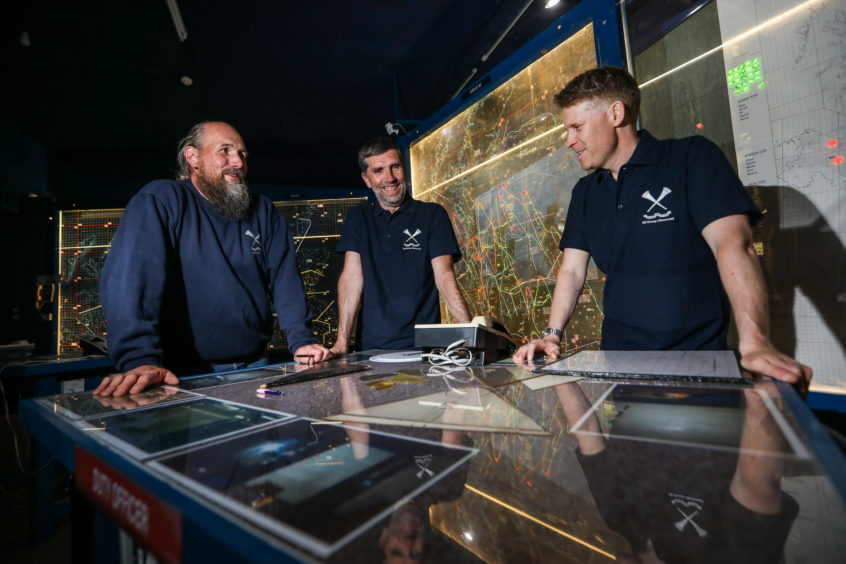A Dundee Cold War bunker carefully restored for more than a decade will be opened to the public for the first time this year.
The building, in Craigie, was established in 1962 to measure nuclear blast waves and radioactive fallout in the event of an attack by the Soviet Union.
It was one of Scotland’s five headquarters linked to a network of more than 1500 smaller monitoring posts including in Cupar, St Andrews and Arbroath.
They were built when the Royal Observer Corps (ROC), which originally monitored British skies for enemy planes during the First and Second World Wars, moved to a nuclear reporting role as tensions grew with the Soviet Union.
An army of volunteers with the charity 28 Group Observed have carried out restorations but can only open up the facility, on Craigiebarn Road, a few times a year.
Bunker manager Gavin Saxby is welcoming 70 visitors at the start of August – the first groups of 2019.
The facility features a blast-proof door, as well as communication devices and equipment to analyse radiation levels and potential cloud movement in the event of a nuclear strike.
Gavin, a systems engineer based in Edinburgh, said: “If there had been an attack the facility would have been used to monitor the direction and elevation of nuclear blasts.
“It would also measure the pressure and radiation levels with the help of the other stations.
“The whole point of all these bunkers would have been to triangulate where the bombs fell and assess the effects of the blasts.
“These would be plotted on giant perspex screens which we have set up again inside.”
The bunker, which would have been self-contained for months, was run mostly by volunteers from ROC and received funding from the Ministry of Defence.
It was decommissioned in 1991 before control was handed over to Dundee City Council’s Emergency Planning Unit.
It was then sold to a private developer before 28 Group Observed began restorations around 15 years ago.
Gavin said: “We’ve worked hard to acquire different items that would have been in here at the time as it was essentially just an empty concrete box when we began in 2004.
“Being an IT person, my favourite item is the Tele-talk and carrier receiver we have managed to get working again.
“It’s a communication box that essentially looks like a blue and yellow sandwich toaster.
“It contains a microphone and speaker and you press and hold the button when you want to talk. We can speak with others with the same device in similar bunkers across the UK.”
Demand for the tours has been high and Gavin said the site would attract many tourists if it was opened as a permanent attraction but that is not possible because it is located within a cul-de-sac and the disruption to residents would be too severe.
Gavin said: “We are practical and pragmatic about it. We feel we do the best we can under the circumstances.
“To open it up as a permanent attraction would be my dream and I think most of us share that idea. It will never be practical unfortunately but most dreams aren’t.
“Our neighbours have been great and we wouldn’t want to damage the relationship and potentially ruin what we already have.”
The charity regularly appeals for donations so that the team can continue its long and painstaking restoration work on the facility, officially named UK Warning and Monitoring Organisation (UKWMO) Caledonian Sector HQ bunker. To donate, visit www.28group.org.uk











